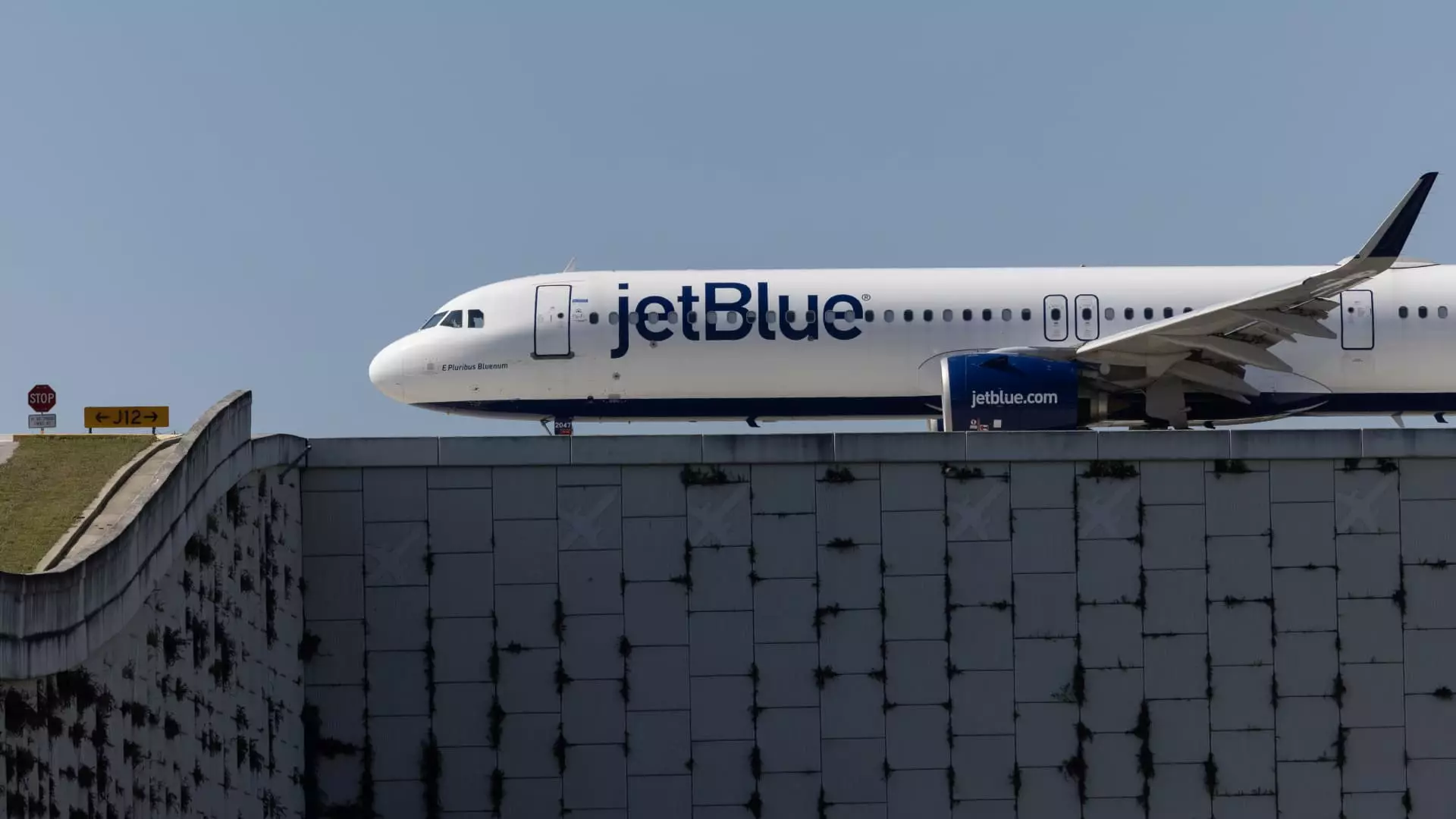On a day marked by significant upheaval, JetBlue Airways saw its shares plummet over 25%—an unprecedented dip for the airline since its public debut over two decades ago. This staggering decline was largely attributed to a disappointing financial outlook that sent shockwaves through the investor community. The New York-based airline warned that it expects its unit costs, excluding fuel, to soar by as much as 7% in the upcoming year. During the first quarter alone, they forecasted a potential increase of up to 10% compared to the same period last year. Given the context, it’s evident that JetBlue’s financial forecasting has raised alarm bells not just for investors but for the wider aviation market as well.
While JetBlue struggles with its rising costs, major competitors like Delta and United are reporting higher revenue growth, underscoring a contrasting narrative within the industry that highlights JetBlue’s potential vulnerabilities. In an economy that rewards efficient cost management and effective pricing strategies, JetBlue’s challenges become apparent as it attempts to navigate operational hurdles while keeping pace with those more established players in the market.
JetBlue is currently implementing a multi-faceted strategy aimed at mitigating its financial woes. This includes the difficult decision to eliminate unprofitable routes and delay new aircraft acquisitions. The objective is not only to streamline operations but also to generate revenue through more lucrative ticket pricing. Additionally, reports have surfaced about the airline offering voluntary early retirement packages to senior pilots, a move intended to ease operational burdens while aligning workforce costs with the company’s financial strategy.
While JetBlue’s efforts to cut costs were noteworthy—highlighting a reduction of $190 million last year—the impact of these strategies is expected to be gradual. CEO Joanna Geraghty emphasized during an earnings call that the company is committed to a long-term vision, even if immediate results are not apparent. However, addressing the glaring revenue deficiencies compared to rivals may require even more aggressive strategies if JetBlue hopes to emerge from its current predicament with sustainable profitability.
JetBlue’s complex challenges are compounded by external factors that have impeded its growth. Recently, the airline faced a setback when a federal judge blocked its planned acquisition of Spirit Airlines, a significant blow considering Spirit’s subsequent bankruptcy filing. Additionally, a regional partnership with American Airlines was deemed untenable following legal scrutiny, further limiting JetBlue’s growth avenues in a competitive landscape.
Analysts have taken note of the struggles, with Melius Research analyst Conor Cunningham pointing out that, despite the current management team’s ability to meet operational targets, JetBlue is lagging in a market where its competitors are thriving. With the outlook for broader industry growth seemingly robust, JetBlue’s inability to capitalize on favorable conditions puts it in a precarious position.
Looking forward, JetBlue has projected modest revenue growth of between 3% and 6% for 2025, despite anticipated flat capacity. However, grounding numerous Airbus jets—largely due to the recall of Pratt & Whitney engines—is likely to pose further complications and increase operational costs in the near term. Such challenges force the airline to remain vigilant in its quest to bolster unit revenue, especially in the face of a demanding market landscape and increasing scrutiny from both investors and regulators.
Ultimately, JetBlue’s path to recovery hinges on multiple factors, including its ability to efficiently manage costs while navigating a series of external pressures. While optimistic projections have been made about potentially adding up to $900 million to pretax profit by 2027, skepticism remains prevalent. The airline’s future depends on its strategic initiatives, ability to adapt to an evolving market, and most crucially, regain the trust of its investors who have recently seen their stakes plummet in value.


Leave a Reply